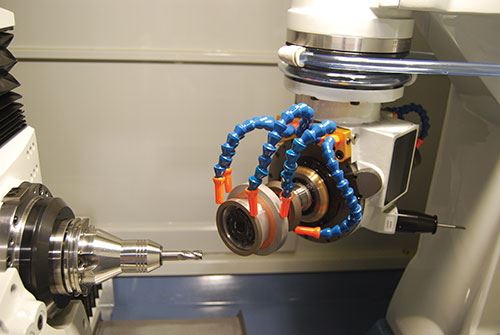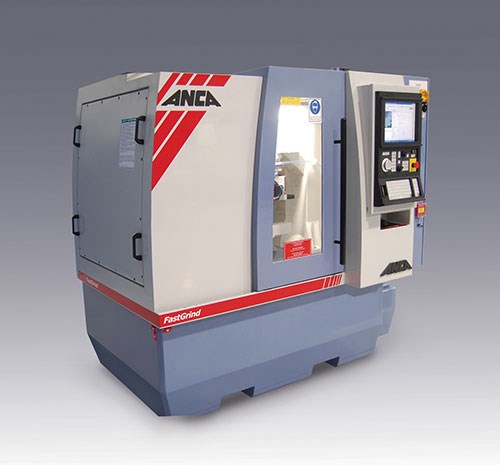In-House Tool Grinding: the “Indirect” Machine Tool Investment
Though CNC tool grinders are used primarily by cutting tool manufacturers and regrinding services, several factors have made these machines increasingly attractive for in-house tool grinding by production facilities.
Share








Hwacheon Machinery America, Inc.
Featured Content
View More

Would your shop purchase a CNC machine tool that would never be used to make a sellable end-use part? Russell Riddiford says he has seen a steady increase in the number of machining facilities choosing to do this very thing. He is president of the U.S. business unit for ANCA. The machine tool in question is a CNC tool grinder.
Traditionally, these machines are sold to cutting tool manufacturers and regrinding services, and these companies still make up the largest market. Yet several factors have made in-house CNC tool grinding increasingly attractive to manufacturers that use a sizable volume of tooling. The machines have become less expensive over the years, and ANCA (like other tool grinder makers) has steadily improved its control interface to make the machine easier to use—to the point that a sophisticated understanding of cutting tool design is no longer needed, because that knowledge is built into the machine’s software. What’s more, pressure to reduce inventories has led many manufacturers to take control of their tool inventory by controlling their own regrinding.
The shop that considers adding in-house tool grinding typically faces an investment decision unlike that of any previous machine tool purchase the shop has made, Mr. Riddiford says. A machine tool is usually purchased because production demand directly justifies it. Either a new job demands a new machine, or some existing job needs to be produced at a higher rate. By contrast, the tool grinder makes an indirect contribution. It does not directly produce any part number the shop is tasked with delivering. As a result, just figuring out which area of the shop will give up floor space for this machine can be a challenge.
Invariably, he says, any resistance or hesitation about the tool grinder fades. Usually this is because the machine provides the shop with a freedom it never had before—the freedom to quickly produce and experiment with custom tool geometries. By tailoring tools to jobs, the shop can improve process effectiveness in ways that it might never have previously considered.
Mr. Riddiford notes that in-house tool grinding is actually one of two non-traditional markets for tool grinders that have become more active recently. The other is medical implant manufacturing. The precise multi-axis grinding platform that is effective for producing drill and end mill geometries also happens to be effective for producing the complex geometries of artificial knees, heart valves and other implanted components. The company continues to allocate engineering resources to this market as medical machining demand grows. Here, he says, it is his company that is challenged to think differently about the machine. For ANCA, the significant difference in this application is that, in this case, the machine is being used to make a finished, end-use part.
Related Content
-
Orthopedic Event Discusses Manufacturing Strategies
At the seminar, representatives from multiple companies discussed strategies for making orthopedic devices accurately and efficiently.
-
Shoulder Milling Cuts Racing Part's Cycle Time By Over 50%
Pairing a shoulder mill with a five-axis machine has cut costs and cycle times for one of TTI Machine’s parts, enabling it to support a niche racing community.
-
Five Common Mistakes Shops Make with ER Collets (And How to Prevent Them)
Collets play a crucial role in the machining process, so proper tool assembly and maintenance is important. Here are five potential pitfalls to avoid when using ER collets.




















.png;maxWidth=150)


















